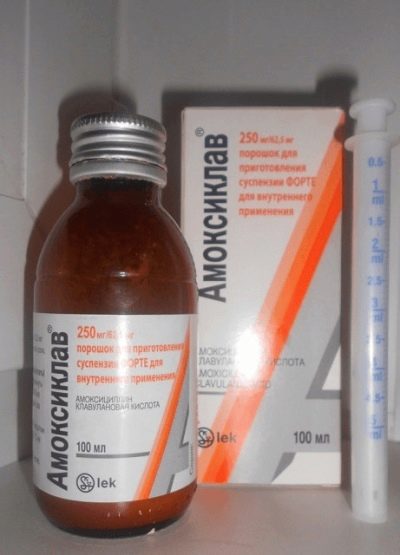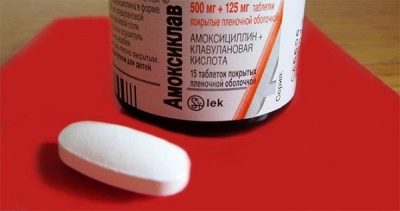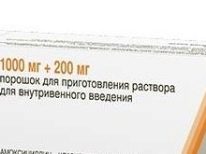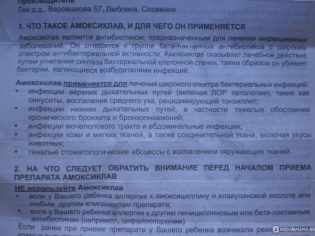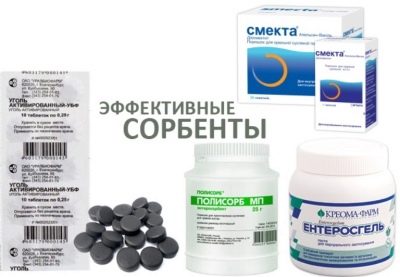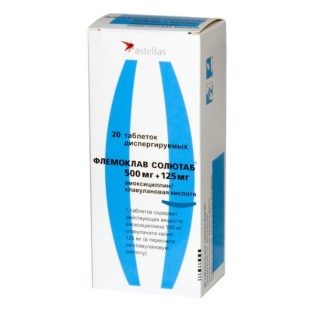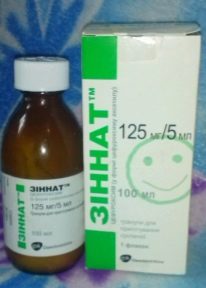Amoxiclav for children: instructions for use
Amoxicillin-based antibiotics are prescribed in childhood quite often, because they are effective for various infections and help to quickly improve the condition of a sick baby. The addition of such an antimicrobial compound with clavulanic acid increases the therapeutic effect, therefore, preparations with such a combination of active substances are also in demand by pediatricians, ENT doctors and other specialists. One of these products is Amoxiclav, a medicine from the company Lek from Slovenia.
Release form
The drug is presented in pharmacies in several dosage forms:
- A powder that is diluted with water to form a slurry. It is sold in dark glass bottles, has a white-yellow or almost white color, and after dilution it becomes a sweet homogeneous liquid with a fruity odor. Together with the bottle, a dosing syringe for 5 ml of suspension is sold.
- Tablets in the shell. They are packed in blisters or jars, and in one pack is from 10 to 21 tablets. They have an elongated shape, and the shell has a white color. On the preparation with the highest dosage, digits are squeezed out on one side (the number of ingredients is indicated), and on the other there are letters “AMS”.
- Powder in vialsfrom which the solution is prepared for intravenous injections. He has a white or with a small yellow color. Such "Amoxiclav" is packed in hermetically sealed vials, which are sold in 5 pieces in one pack.
Amoxiclav Quiktab is produced separately. It is represented by octagonal yellowish tablets that smell of fruit. On contact with water, this medicine quickly dissolves and forms a yellow, sweet suspension. "Amoxiclav Quiktab" is sold in packs of 10 and 14 tablets, and the tablets themselves are placed in blisters of 2 pieces.
Composition
Unlike many other antibiotics in Amoxiclav, there are just two ingredients that “work” together, enhancing the therapeutic effect of the drug. The first is amoxicillin, and clavulanic acid is its “companion”.
The dosages of these substances differ in different forms of the drug.
- Suspension in finished form contains amoxicillin in a dosage of 125 or 250 mg per 5 milliliters, and the amount of clavulanic acid in such a liquid Amoxiclav, respectively, will be 31.25 or 62.5 mg. In addition, release suspension, 5 ml of which contains 400 mg of amoxicillin. The dosage of the second active substance in it is 57 mg.
- In pills, coated, the dose of amoxicillin is 250, 500 or 875 mg, but the amount of clavulanic acid is unchanged at any dosage of the antibiotic and is 125 mg. As for the dispersible drug "Kviktab", such tablets are produced with the content of amoxicillin in the dose of 500 and 875 mg per tablet, and clavulanic acid in this medicine is also represented by the amount of 125 mg.
- Injectable "Amoxiclav" the amount of amoxicillin is 500 or 1000 mg in one vial. The dosage of clavulanic acid in this preparation is 5 times less than the antibiotic, that is, respectively, 100 or 200 mg.
Auxiliary components of various forms of Amoksiklava protect the drug from damage and provide the desired physical characteristics. Citric acid, carmellose sodium, flavoring agents, sodium citrate, sodium saccharinate and other compounds are added to the suspension. The tablets contain hypromellose, talc, diethyl phthalate, MCC and other components. Some of these substances create the core of the drug, others - its dense shell.
In order to make Amoxiclav Quiktab easily dissolve and have a pleasant taste, microcrystalline cellulose, castor oil, aspartame, orange flavoring and other inactive ingredients are used in the manufacture of such tablets. But in the composition of the injection form of the drug, there are no other components besides the active substances.
Operating principle
Amoxicillin present in all forms of the drug has an antibacterial effect against many pathogens. Moreover, the addition of clavulanic acid helps to expand its range of effects on infectious agents. The fact is that some microbes produce beta-lactamase - enzymes that can interfere with the action of penicillin antibiotics, which include amoxicillin.
Due to the fact that clavulanic acid can combine with these enzymes, "Amoxiclav" is able to destroy even those bacteria against which amoxicillin alone is powerless. The drug helps to get rid of Escherichia, clostridia, strepto-and enterococci, hemophilic bacilli, bacteroids, menigococci, Yersinia, Proteus and many other microorganisms.
Indications
"Amoxiclav" is used in the treatment of infections that affect various organ systems. The drug is discharged in such cases:
- if a child has purulent tonsillitis, otitis media, a pharyngeal abscess, sinusitis, or another infection treated by ENT doctors;
- if the bacteria hit the lung or bronchus, causing cough (dry or barking), high fever, purulent sputum and other symptoms;
- if a patient has a microbial lesion of the excretory system;
- if the pathogens have caused inflammation of the skin, subcutaneous tissue, joints, bones, or other connective tissue;
- if your baby has an odontogenic infection.
In addition, "Amoksiklav" can be appointed with a purulent process in the biliary tract and germ lesion of the genital organs, as well as for the prevention of purulent complications after surgical treatment.
From what age is appointed?
Suspension containing amoxicillin 125 or 250 mg per 5 ml is prescribed for children from birth. The injection form "Amoksiklava" is also used at any age, even in newborn babies and premature babies. A suspension, in 5 milliliters of which 457 mg of active ingredients are located, can be given from 3 months of age. Tableted drug (including dissolving tablets) is approved for the treatment of children over 12 years old, if their body weight is above 40 kg.
Contraindications
The use of "Amoxiclav" in an infectious disease in a child is prohibited:
- in case of hypersensitivity to any component of the selected form of the drug;
- allergic reaction to antibiotics with a similar structure (other penicillins or cephalosporin preparations);
- with lymphocytic leukemia;
- with severe liver disease;
- with infectious mononucleosis.
In case of severe kidney damage, the dosages of the medicine are adjusted by the doctor. If a child has previously been diagnosed with antibiotics with pseudomembranous colitis, it is acceptable to give him Amoxiclav only under medical supervision.
Side effects
The body of some children may respond to the use of any form of Amoxiclav:
- nausea, abdominal pain, episodes of vomiting, diarrhea, loss of appetite and other symptoms of the stomach or intestines;
- increased activity of liver enzymes or the development of jaundice;
- the occurrence of stomatitis or another form of candidiasis;
- Quincke's edema, pruritus, urticaria, or other allergic reaction;
- worsening of blood formation, which is manifested by a decrease in the number of leukocytes and platelets;
- headaches, sleep problems or cramps;
- impaired kidney function.
If the patient receiving Amoxiclav has any negative symptoms, you should immediately notify your doctor.
Instructions for use
To make a sweet suspension of powder, you need to add clean water inside the bottle before starting treatment. The amount of water is indicated in the paper annotation, and on some bottles there is a mark to which water should be poured. The liquid is added in two steps, after each of which the vial must be closed and the contents vigorously stirred to completely dissolve the powder.
The tablet in the shell must be swallowed without digging through, and the drug "Quiktab" is first dissolved in water, taking it in a volume of 30 ml. In addition, the dispersible tablet can be placed in the oral cavity and wait until it is dissolved by saliva and then swallowed. To reduce the risk of adverse effects on the gastrointestinal tract, the intake of suspensions and tablets is recommended not after meals, but at the beginning of meals.
Dosages taken inside the drug are calculated by the doctor on amoxicillin. At the same time, the maximum dose of such an antibiotic in childhood is 45 mg / kg, and clavulanic acid is not given to children in a dose higher than 10 mg / kg.
When prescribing suspensions with a dosage of 125 mg + 31.25 mg and 250 mg + 62.5 mg (312.5 mg in total), they are guided by the following principles:
- a baby of the first 3 months of life is prescribed 30 mg of amoxicillin per day for 1 kg of weight;
- children older than 3 months with a mild infection are given daily at a dose of 20 mg of antibiotic per 1 kg of their body weight;
- if a child is older than three months, moderate infection, the daily dose of amoxicillin per 1 kg is also 20 mg;
- to determine the daily dose of "Amoksiklava" in diseases of the respiratory system or in the case of severe infections of another location, the weight of a small patient in kg must be multiplied by 40 mg of antibiotic;
- to babies up to 3 months, the suspension is given with an interval of 12 hours;
- the daily dose of the suspension for children older than three months is divided into 3 doses - the medication is given every eight hours;
- Approximate doses of the suspension are also listed in the powder summary in the table.
Suspension with a dosage of 400 mg + 57 mg is taken twice a day. Her daily dose is also calculated by the amount of amoxicillin. Depending on how hard the infectious process is, the child is prescribed from 25 to 45 mg per 1 kg. The medicine is given at intervals of about 12 hours.
The dosage and mode of taking the tablets in the shell for adolescents over 12 years of age also depend on the course of the disease. If the disease is moderate or easy, the patient is usually prescribed a triple dose of the drug at a dosage of 375 mg (250 mg + 125 mg). If a higher concentration of the antibiotic is used (500mg + 125mg), then the medicine should be drunk every 12 hours, that is, twice a day.
If the doctor assesses the infection as severe or the adolescent was diagnosed with an airway injury, then single doses will be higher. When taken every 8 hours, the child should be given pills with a dosage of 500 mg + 125 mg, and when taken twice, use a drug that contains 1000 mg of active substances (875 mg + 125 mg).
A single dosage of "Amoxiclav Quiktab" for moderate and mild infections is one tablet containing 625 mg of active ingredients. It is given to a teenager with an interval of 12 hours. In case of infection of the respiratory system or serious illness of other organs, such medication should be given three times at intervals of about 8 hours or continued to be taken twice, but replaced with tablets with a higher concentration of antibiotic (875 mg + 125 mg).
The injection form of the drug is injected only into the vein, having previously diluted the powder with sterile water or other infusion solutions.The injection is performed slowly over 3-4 minutes, but more often the drug is prescribed drip - with this method of injection, the drug enters the child’s body gradually in 30-40 minutes.
To calculate the dose of "Amoksiklava" in injections take into account the content of both active ingredients. Children under 12 years old are prescribed 30 mg (25 mg of amoxicillin and 5 mg of clavulanic acid) per kilogram of body weight.
The frequency of injections depends on the severity of the disease and the age of the baby. For example, if a child is born prematurely and has an infection, injections are made every 12 hours, and in a serious illness a 10-year-old patient needs to introduce Amoxiclav into the vein every 6 hours. For children over 12 years old, a single dose is one bottle of 1200 mg of active ingredients.
How long to use Amoxiclav in each case depends on many factors, so the duration of the course of treatment should be determined by the doctor. Usually, the medication is prescribed for a period of 5 to 14 days.
So that the disease does not remain undertreated and the bacteria did not develop resistance, one should not stop taking Amoksiklava ahead of time, which was established by the doctor, even if the child is already feeling well.
Overdose
Excess doses of a suspension or Amoxiclav tablets usually cause such negative symptoms of the digestive system as diarrhea, vomiting or abdominal pain. Also, in case of overdose, the CNS may be affected, leading to nervous excitement, dizziness or insomnia, and sometimes to seizures.
If the child drank a lot of pills or an excessively large dose of the suspension less than four hours ago, the stomach is washed out and a sorbent is prescribed to block the absorption of the drug in the gastrointestinal tract. Then the patient is observed and, if required, symptomatic therapy is used. If the overdose is severe, hemodialysis is prescribed, since it effectively removes the components of Amoxiclav from the body of a child.
Interaction with other drugs
The use of Amoxiclav may affect treatment with many other medicines. For example, if you use such a drug and antacids or laxatives, then amoxicillin will be worse absorbed and later begins to act. Therefore, if the patient is already taking any medications, their compatibility with Amoxiclav should be consulted with the doctor.
Terms of sale
All forms of the drug are sold only by prescription, which must be obtained from the treating doctor. The price of "Amoksiklava" depends on the dosage form and the dosage of the active ingredients. For example, for 25 g of powder, from which a suspension is obtained with a dosage of 125 mg + 31.25 mg, you need to pay about 120-130 rubles. The price of 15 tablets with the content of active ingredients 250mg + 125mg is about 230 rubles, and 5 ampoules with a dosage of 500mg + 100mg cost 500 rubles.
Storage conditions
Store the drug is recommended at room temperature in a dry place. In this case, the medicine should be hidden from small children. The shelf life of all forms of the drug is 2 years, but after mixing with liquid water, “Amoxiclav” (suspension) can be stored for only 7 days by placing the bottle in the refrigerator.
The solution for injection prepared from powder should be injected into a vein no later than 20 minutes after the dilution.
Reviews
On the use of "Amoxiclav" in children there are mostly positive reviews, in which the drug is called effective for angina, laryngotracheitis, pneumonia and other diseases. For the treatment of children, the powder most often is chosen, which must be diluted with water to obtain a sweet medicine. The advantages of this suspension include a wide range of actions, affordable price, liquid form and the possibility of use in infants up to a year.
Usually, the drug is tolerated normally, but you can also see negative reviews in which they complain about the appearance of various negative reactions, for example, an allergic rash or vomiting.The disadvantages of the suspension are also called the presence in the composition of this form of various chemical additives and reduction of the shelf life after dilution of water.
Analogs
If you need to replace "Amoxiclav" with another drug, the doctor may prescribe an analog with the same combination of active ingredients. These antibiotics include "Ecoclav», «Augmentin"," Arlet "," Panklav ","Flemoklav Solyutab"," Medoclav "and others. Among them are suspensions, tableted drugs, and drugs that are injected, so choosing a replacement is quite simple.
Replace "Amoksiklav" can and drugs based on amoxicillin, for example, drugs "Ospamox», «Amosin, Flemoksin or Hikontsil. Although they do not contain clavulanic acid, such antibiotics can also be used for bronchitis, scarlet fever, sinusitis, laryngitis, streptococcal infections, and intestinal infections, but the doctor should decide on such a replacement.
Instead of "Amoksiklava" the doctor may also prescribe one of the cephalosporins, since these antibacterial agents have a high efficacy and also a large spectrum. Children are most often discharged "Suprax», «Cedex», «Pancef" or "Zinnat"Because these cephalosporin preparations are diluted with water to form a suspension." However, in severe infections, injectables are required, for example, "Ceftriaxone" or "Cefotaxime».
If a patient is found to be intolerant to amoxicillin and is allergic to cephalosporins, to substitute "Amoxiclav" one has to use a tool with a different structure, for example, from the group of macrolides. Among them, babies are often prescribed "Macropene“In suspension, because such an antibiotic can be given from birth even to infants. No less in demand and "Sumamed», «Klacid», «Azithromycin"And their analogues, since it is permissible to use them in liquid form from 6 months of age.
Read more about the drug "Amoxiclav" see the following video.

